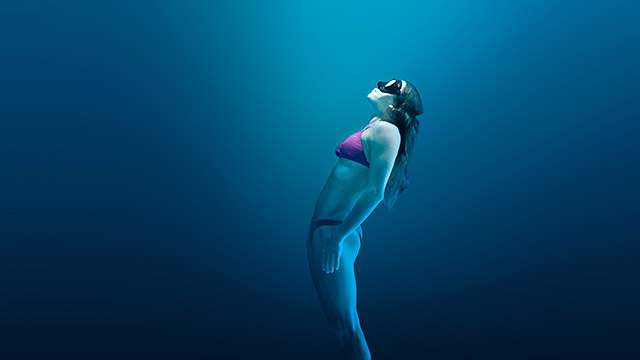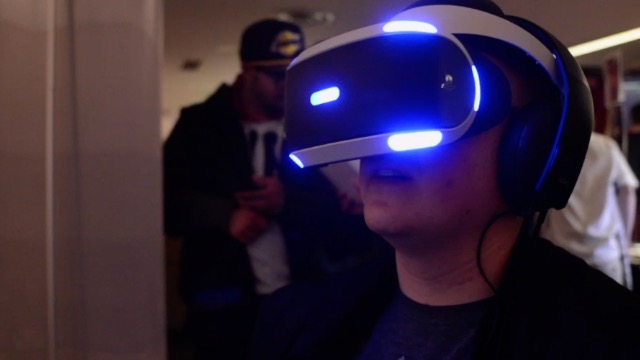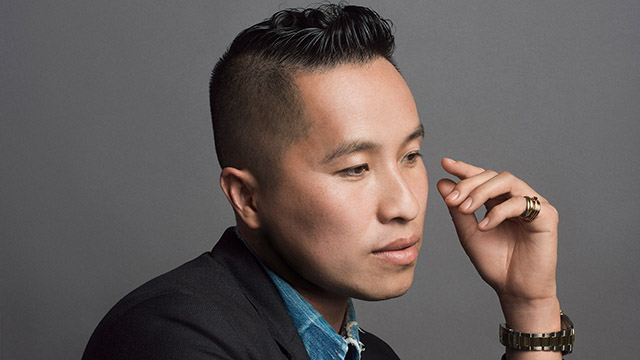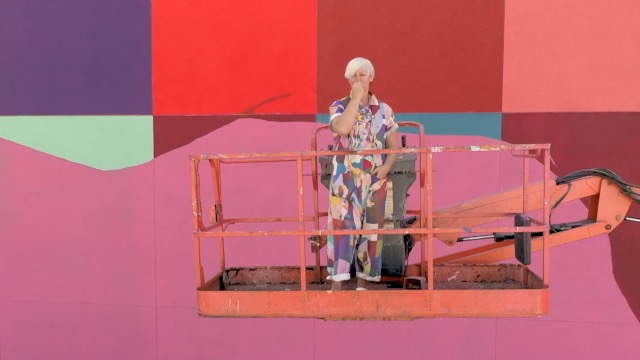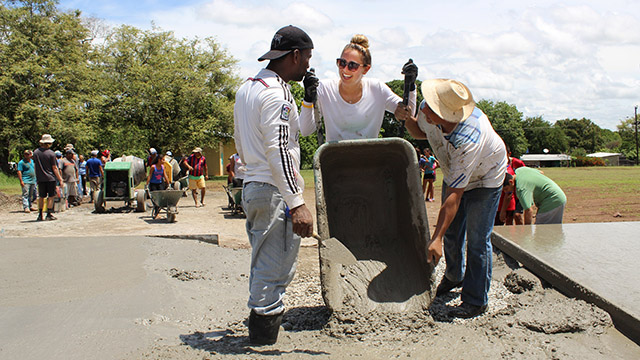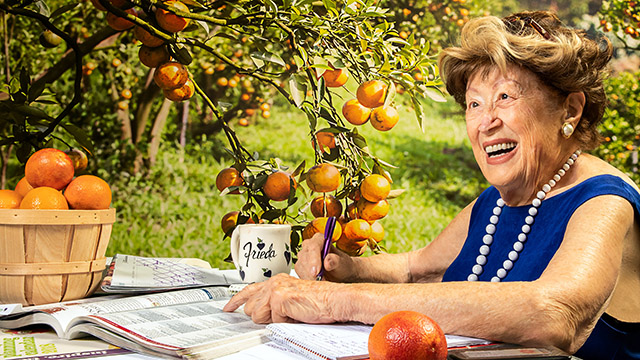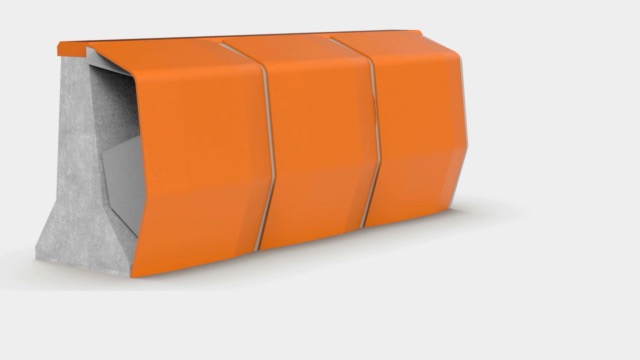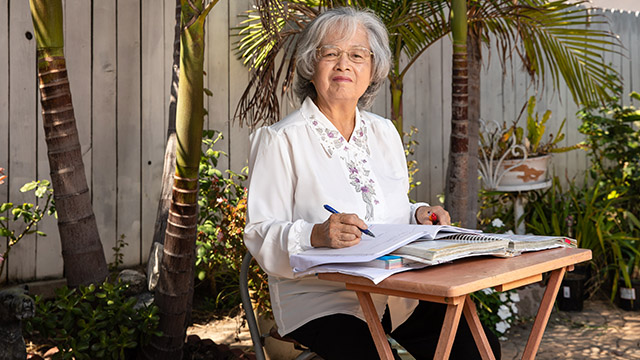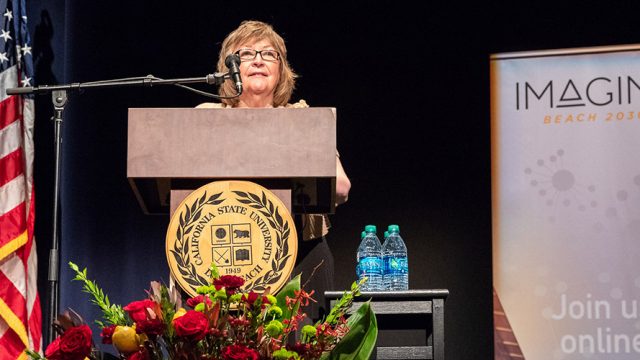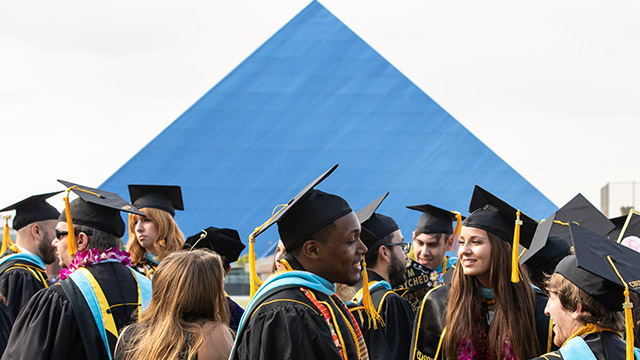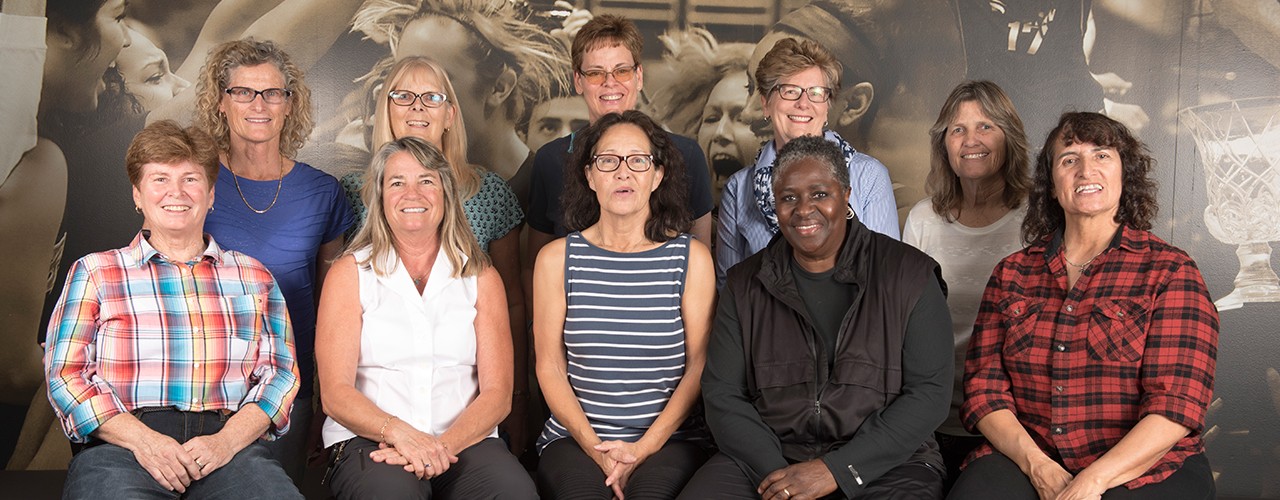Once A Team
When 10 former women’s basketball team members returned to campus early this year to attend an alumni game, the fanfare didn’t extend far beyond the sloped walls of Walter Pyramid. But the jubilant reunion, just one of many that occur on campus each year, was significant – significant to the friends who picked up where they left off despite four decades apart, and significant to Beach Athletics’ history, which has soared to new heights since these women pioneered it.

In 1972, the year two of these women began playing hoops at Long Beach State College, Title IX of the Education Amendments was enacted by Congress and signed into law by President Richard Nixon. Title IX gave men and women equal rights to federally funded educational programs and activities.
In 1974, the same year a majority of the reunited team had begun playing for The Beach, Ann Meyers received the first ever full-ride women’s athletic scholarship to UCLA. The Beach was also ready to give scholarships to female athletes. Decades before Title IX was passed, female administrators at Long Beach State had begun pushing for equal treatment for men and women.
Women’s basketball and volleyball coach Dr. Fran Schaafsma, who joined Long Beach State in 1962, is credited for pioneering the women’s athletic program and coordinating competitions and conferences with other schools in the area even before women had a national collegiate organization. She was also an excellent basketball coach, leading the school to its first SoCal Intercollegiate title in 1963, and compiling a 209-73 record in 17 seasons. At the same time, physical education instructor Dorothy Deatherage, who took over women’s intercollegiate athletics in 1964, had steadily increased the $400 budget for women’s sports through a series of proposals and appeals to the Associated Students board. Title IX finally supported the work that had been done by these strong female administrators, though adoption would continue to be slow.
“I will never forget. We were going to Fresno to play a doubleheader with the men and we had to scrounge around and drive our own vans,” said Karen Welliver, who played for Long Beach State from 1975-77. “The men took a luxury bus to the airport to fly, and we had to drive back and forth ourselves.” It was in this climate that the 10 scrappy women from around Los Angeles County formed a team and a strong bond.
Alumna Angie Avery, who played from 1974-76 and remains an avid supporter of Beach basketball, was the catalyst that brought the team back together for the first time in 40 years. After recruiting help from former teammate Cathy Fisher, the still energetic team members converged on the Pyramid, several traveling from out of state, to reminisce.
Go behind the scenes of their 40th reunion photo shoot.
Q/A
Here are some key memories they shared.
How does it feel to see each other again after 40 years? Angie Avery: Everyone’s still the same and looks the same, even though now we wear glasses and have wrinkles. But, we just took up where we left off. Trish Reis: It’s like we were never gone. Karen Welliver: It shows the beauty of being on a team, the importance of Title IX, and the opportunities for women. Even though we haven’t seen each other for so long, it doesn’t matter because we were together and striving for the same goals and fighting. You don’t ever lose that.
What was it like to play basketball back then? Angie: You didn’t promote yourself as a basketball player because it was kind of looked down upon. That was just society. Lynne Stith: Most of us probably didn’t play basketball until we were in high school, because you didn’t have women’s teams. And there was no NCAA for women. It was called AIAW, the Association for Intercollegiate Athletics for Women. It didn’t become NCAA until like 1982 when it was combined for men and women. Cindy Simonian: I don’t even remember there being a basketball camp or CIF (California Interscholastic Federation) in high school. Cartde Hicks: You’re basically looking at the pioneers. We are the women, and I’m sure there are some before us, who handed the ball down to these young ladies today. They get the marketing, they get the publicity, they get a lot of the stuff we didn’t get. But our publicity was within ourselves. We made a team, and the way we collaborated on the court is just unbelievable.

 To learn more about the history of women’s basketball and women’s athletics at the Beach, check out Chapter 9 of Professor Barbara Kingsley-Wilson’s Long Beach State: A Brief History and The History of the Women’s Physical Education Department at California State College/University Long Beach 1951-1978 by C. Patricia Reid and Dorothy Deatherage.
To learn more about the history of women’s basketball and women’s athletics at the Beach, check out Chapter 9 of Professor Barbara Kingsley-Wilson’s Long Beach State: A Brief History and The History of the Women’s Physical Education Department at California State College/University Long Beach 1951-1978 by C. Patricia Reid and Dorothy Deatherage.What are some of the differences between how the game was played back then and how it is played now? Kathy Cantu: Back then you’d have a 5-foot-3 guard as opposed to a 6-foot guard. Talent is better now because girls are exposed to basketball at a young age, and there are many more opportunities to play. Women’s sports and female athletes are more accepted. Lynne: We had to do makeshift practices. We’d bring in JV players or other people to stand there so we could figure out how to move during plays. Karen: These girls today may be a little bigger, stronger, faster and can play longer, but they didn’t play with more heart. We played for the love of the game.
What did Title IX mean for you? Lynne: Ann [Meyers] got the first full scholarship at UCLA and if we made the team here, we got our tuition paid for, which was $99. It formed the steppingstones for all the women today to get their school paid for if they could make a team.
What memories stand out the most? Cindy: In ’76, we went to Penn State for nationals and we beat UCLA to do that. That was huge for this team. To be able to go to a national competition, even back then, it was crazy big. Debra Cantu: Long Beach had just gotten university status (in 1972), so we went up against the big kids and their money, and we did it. Cathy Fisher: We beat Ann Meyers. Cindy: She will remember that. Karen: We beat her here in the little, tiny East gym.
How was your experience as a female athlete at Long Beach State? Angie: Long Beach had such an outstanding physical education program that most of the team, except me and Debbie, majored in physical education. Long Beach was a magnet for good athletes. So just on talent alone, we could excel. Karen: Here at Long Beach, we didn’t always play in the big gym or whatever, we kind of had to fight for some of that stuff, but our coaches and our counselors we had when we were PE majors were proud of you, and they wanted you to be successful and to graduate. They cared about the people that played here, even if we didn’t get money. They cared about us and wanted us all to be successful.
Talk about the bond you share. Cathy: We were together all the time. You’d have class and at lunchtime if you weren’t watching “All My Children,” you were playing ball in the gym. A lot of us played volleyball and basketball. So we’d play volleyball together, then we went right into basketball, and then we played summer league. We were sisters. We lived it. And we lived with each other. I think that’s why this class stayed together. We didn’t have any cliques. We were a team and we had fun together. We laughed and we enjoyed, but we played hard and we worked hard.
Anything else you’d like to share? Karen: More important than what people have done, it’s the hearts of these women and the drive that we were taught and the drive that came naturally. There are some people here that had an inner competitiveness that was just in them. And they just loved playing even though sometimes it wasn’t that supported. Angie: These are some of the best athletes I’ve seen. They were fast and strong. Karen: The ultimate message is go for things. Everybody here knows how to be tough and go for things. Cathy: And don’t accept no.


